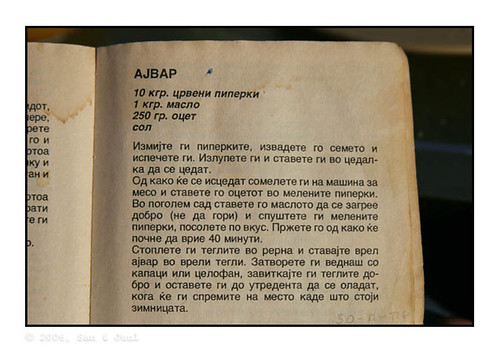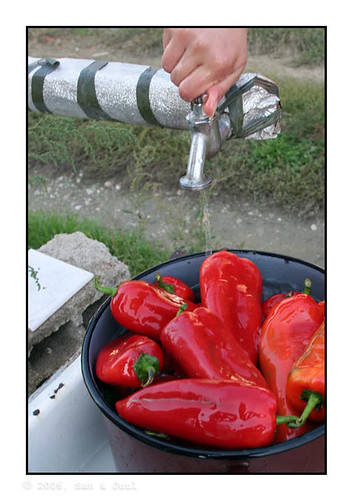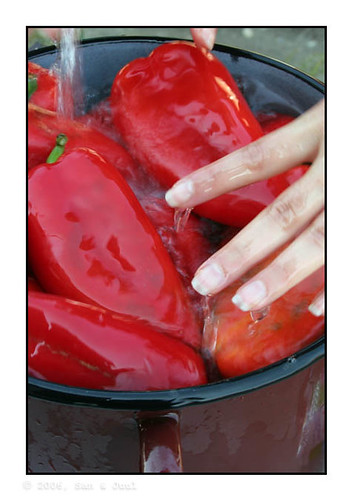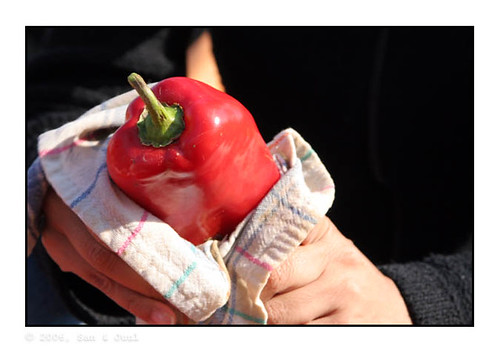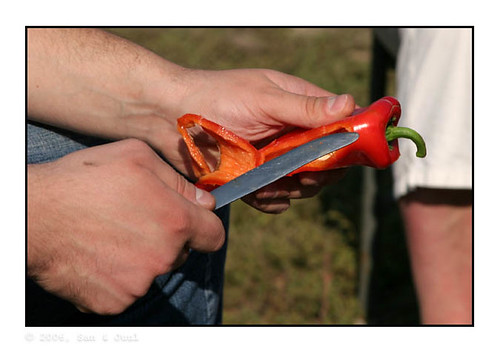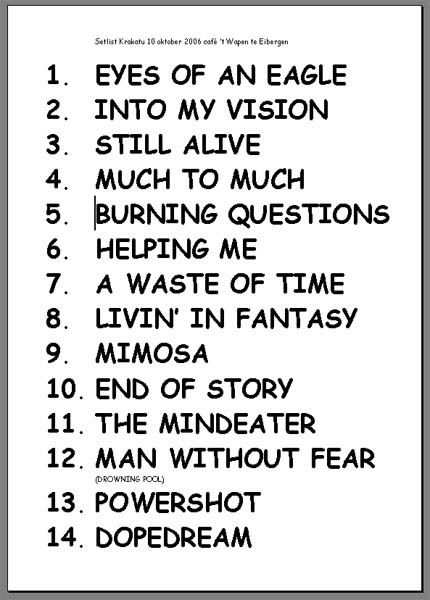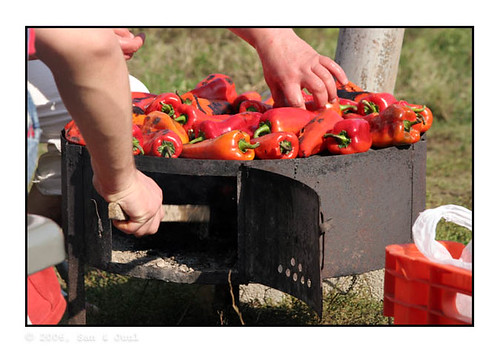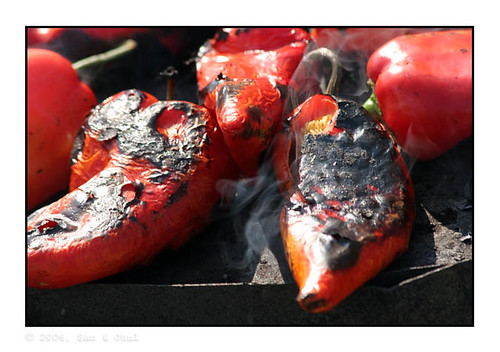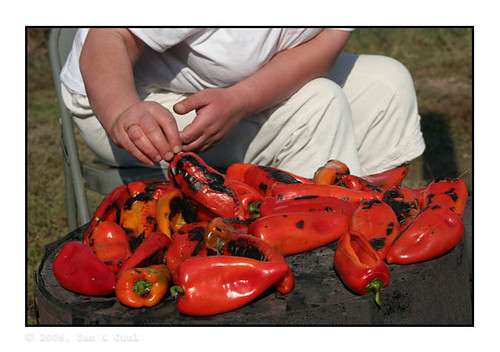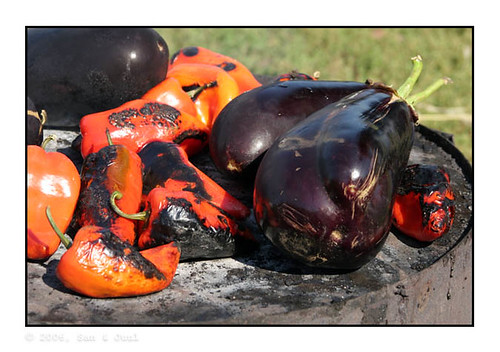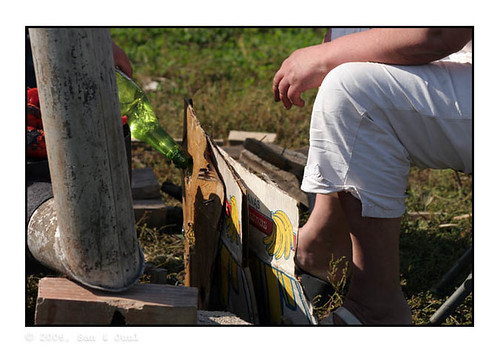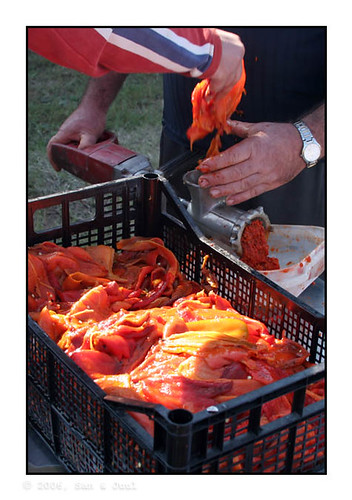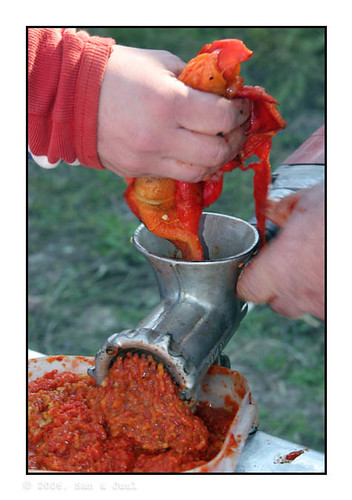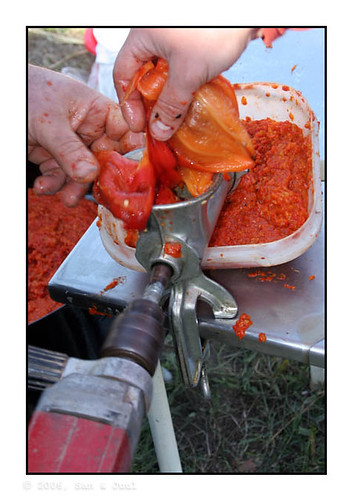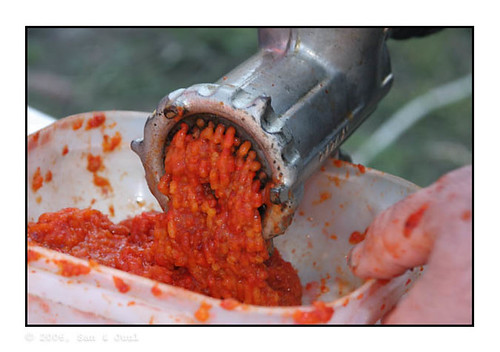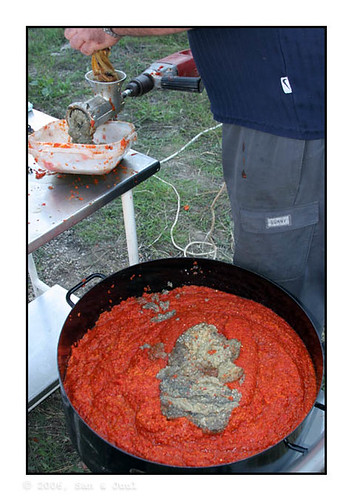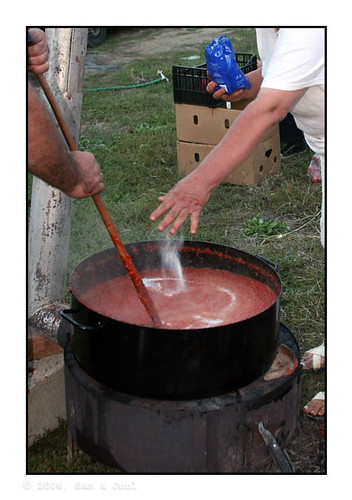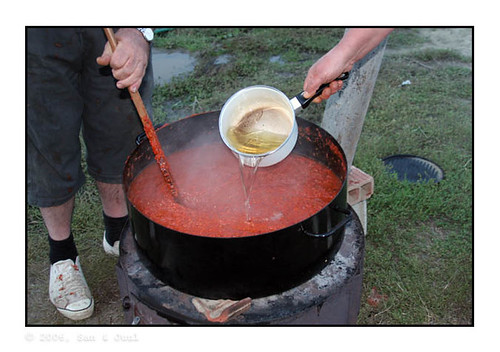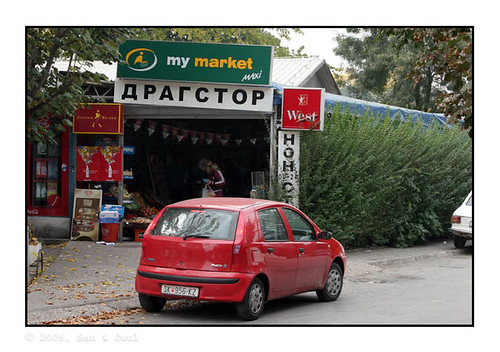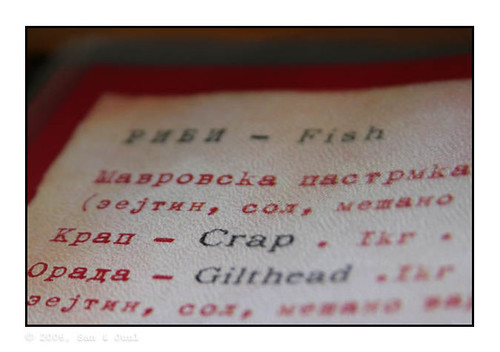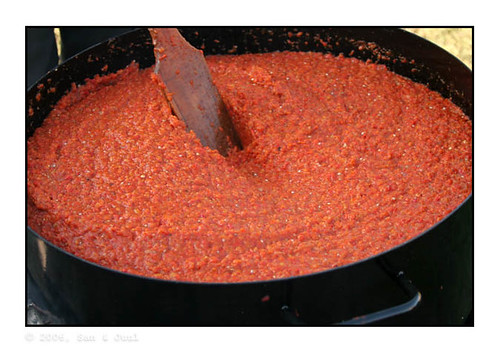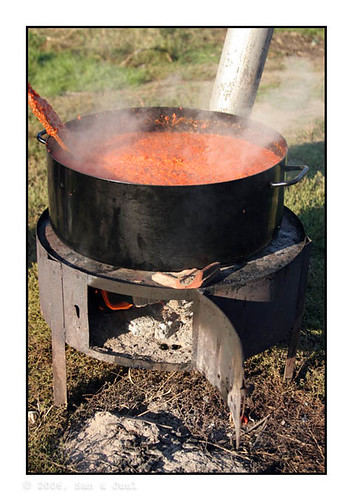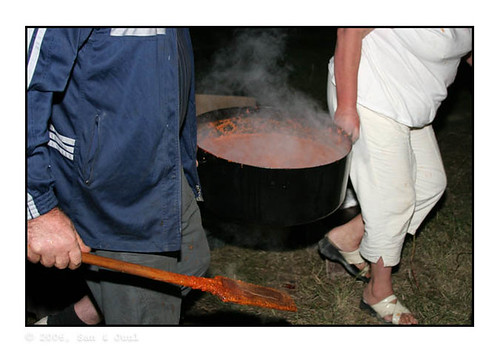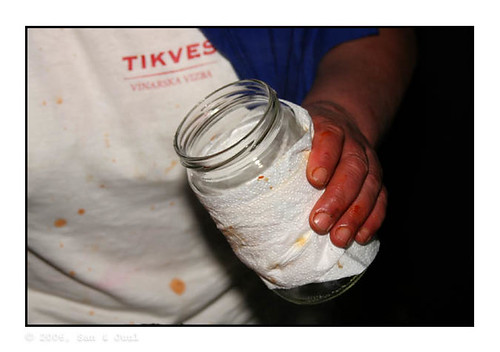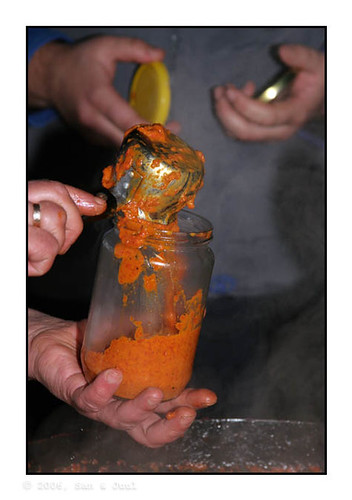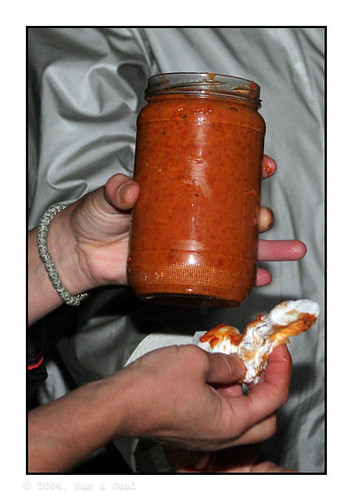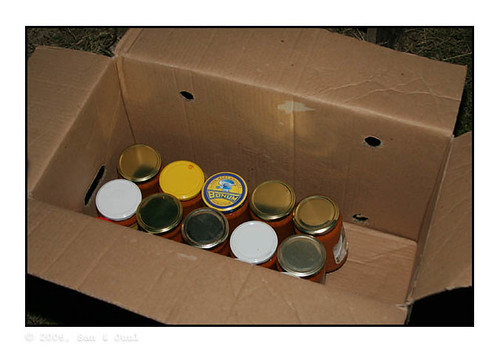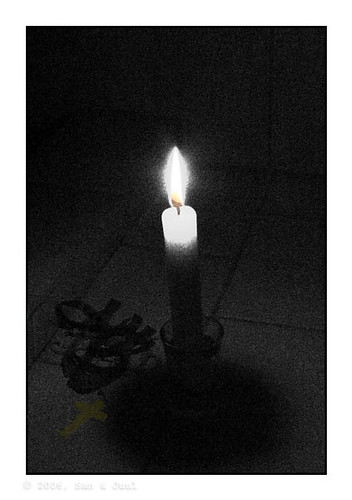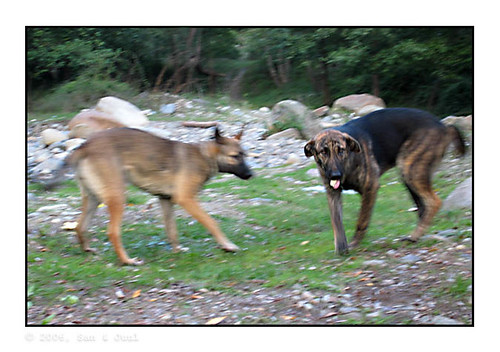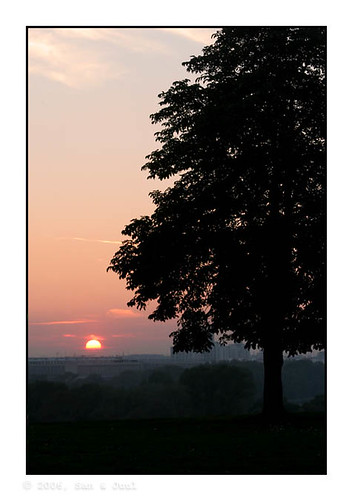It's time to get really messy. Never mind that manicure you did yesterday. In fact, it's time to destroy all of that beautiful work done to your hands and nails. In other words: Let's get dirty. It's time to peel, peel and peel some more.
Before we get to work, let's have a look at the set up of the peel session. What do you need in a professional ajvar peeling environment?
- The roasted paprikas and eggplant;
- A comfortable working place and...
- TIME!
Time can be available in limited quatities, it is wise to have a few buddies around to help you out in this process of peeling and cleaning of the vegetables. It is definately recommended to get mor hands on deck as the level of perceived comfort increases dramatically with every person added to the work-force. The working place is preferably set up outside your house. 60 kilos of paprikas peeled and cleaned from seeds, definately leaves a lot of mess behind if it's not mastered right. In our case, we sat just outside the house in the sun and chatted away the peel session while getting our hands dirty.
All the paprikas are picked from steamy hot bags, releived from their shin, opened up, cleaned from seeds and collected. That's very much the main idea. And still, it takes quite some hours. In any case, our hours spent on this were funny.
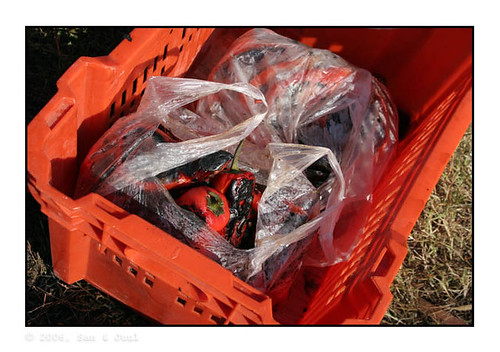
The hot roasted paprikas are put in closed bags. There they are letting off steam... and peel. The skin of the paprika gets of the paprika a lot easier if the paprikas stay in closed hot steamy bags for a while.
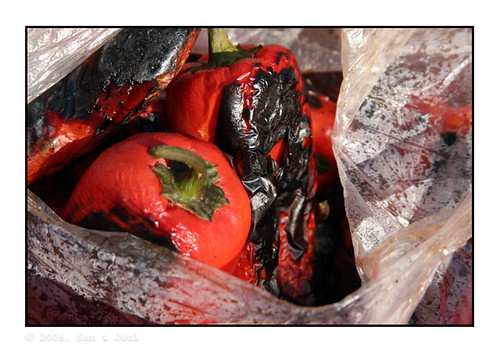
Close up of the 'letting off steam' part in ajvar making.
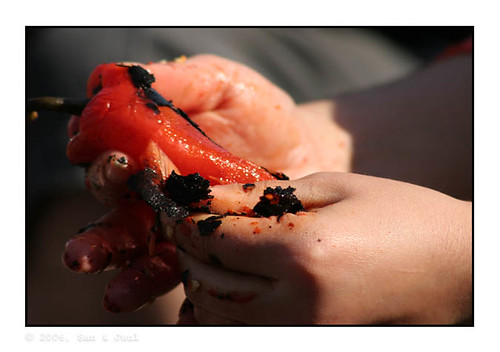
The peel session - try to keep the hands, fingers and nails clean. You won't.
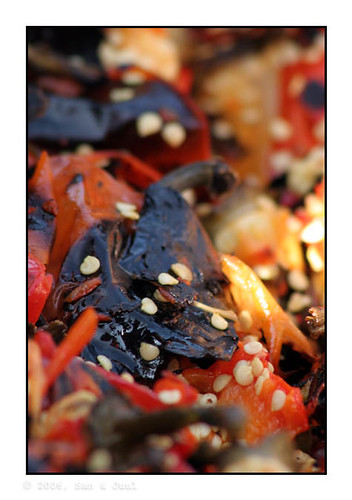
What's left behind after the peel sessions are over.
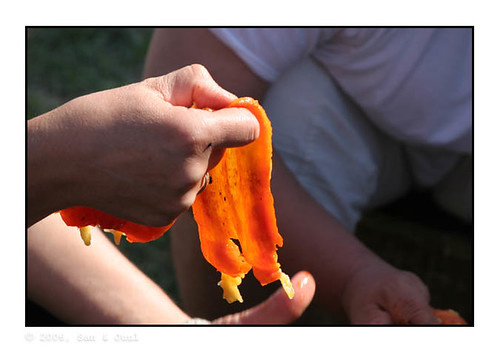
Cleaned roasted paprika - a delicacy in its own.
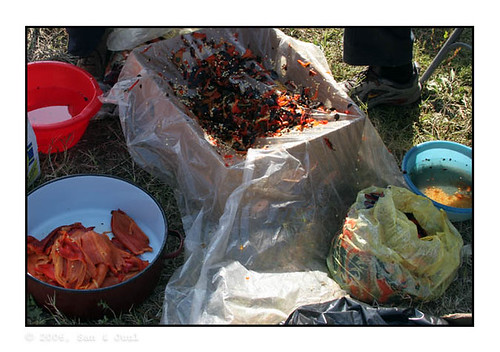
Some of the main ingredients during the peeling sessions: the pan with the collected peeled and cleaned paprikas, the box with peeled skins and seeds, a bag with still warm roasted paprikas to be peeled and some bowls of water to keep hands and paprika clean.
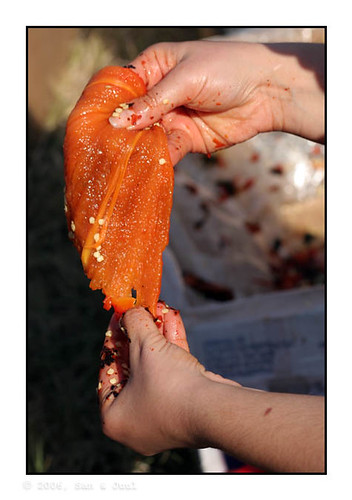
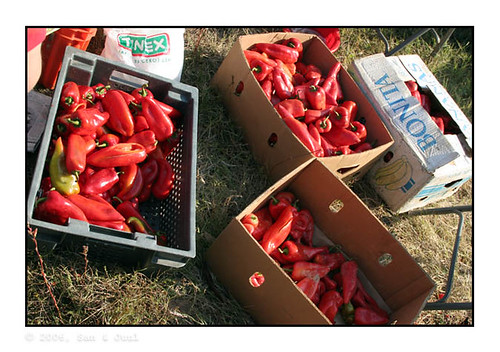 The lot.
The lot.